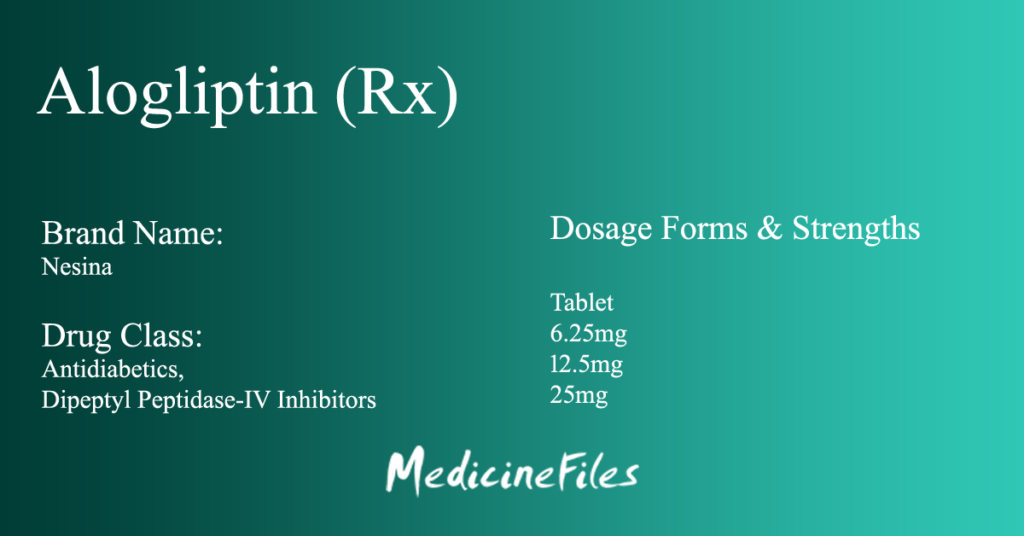Dapagliflozin (Rx)
Dapagliflozin Brand name: Farxiga
Dea Class: Rx (Prescription drug)
Drug Class: Antidiabetics, SGLT2 Inhibitors
Dosage form: Dapagliflozin, Tablet (Farxiga, generic): 5mg, 10mg
In this post
What is Dapagliflozin and how does it work?
Dapagliflozin is a oral sodium-glucose co-transporter 2 (SGLT2) inhibitor.
It is used for improving glycemic control in adults with type 2 diabetes mellitus (DM); reducing hospitalization for heart failure (HF) in adults with type 2 DM. And established cardiovascular (CV) disease or multiple CV risk factors; reducing CV death and HF hospitalization in adults with HF and reduced ejection fraction. And reducing sustained eGFR decline, end-stage kidney disease, CV death, and hospitalization for HF in adults with chronic kidney disease (CKD) at risk of disease progression.
Not recommended for improving glycemic control in patients with type 2 DM and eGFR less than 45 mL/minute/1.73 m2 or for treating CKD in patients with polycystic kidney disease or requiring or with recent history of immunosuppressive therapy for the treatment of kidney disease
What are Dapagliflozin uses?
Dapagliflozin is used for the treatment of type 2 diabetes mellitus as an adjunct to diet and exercise.
It is used for the reduction of heart failure hospitalizations in adults with type 2 diabetes mellitus and established cardiovascular (CV) disease or multiple CV risk factors.
For the treatment of reduced ejection fraction heart failure (NYHA class II to IV) and preserved ejection fraction heart failure for reduction of cardiovascular mortality and hospitalization for heart failure.
It is used for the treatment of chronic kidney disease to reduce the risk of sustained eGFR decline, end-stage kidney disease, cardiovascular death, and hospitalization for heart failure in those at risk of disease progression.
How should I take Dapagliflozin?
Take this medicine only as directed by your doctor. Do not use more of it, do not use it more often, and do not use it for a longer time than your doctor ordered. Do not change your dose unless directed by your doctor.
This medicine should come with a Medication Guide. Read and follow these instructions carefully. Ask your doctor if you have any questions.
Carefully follow the special meal plan your doctor gave you. This is the most important part of controlling your diabetes, and will help the medicine work properly. Exercise regularly and test for sugar in your blood or urine as directed.
Tell your doctor if you are on a low-salt or sodium diet.
You may take this medicine with or without food.
Dapagliflozin Side Effects
The common side effects don’t need medical attention and will disappear as your body adjusts to the dosage. But if you are facing any serious or rare side effects, then immediately seek medical attention.
Renal impairment
- Overall (1.8-6.7%)
- Age ≥65 yr (3.1-14%)
- eGFR 30-60 mL/min (8-28.3%)
- Age ≥65 yr and eGFR 30-60 mL/min (7-35.1%)
Female genital mycotic infections (6.9-8.4%)
Nasopharyngitis (6.3-6.6%)
Urinary tract infection (4.3-5.7%)
Back pain (3.1-4.2%)
Increased urination (2.9-3.8%)
Male genital mycotic infections (2.7-2.8%)
Nausea (2.5-2.8%)
Influenza (2.3-2.7%)
Dyslipidemia (2.1-2.5%)
Constipation (1.9-2.2%)
Discomfort with urination (2.1-2.6%)
Extremity pain (1.7-2%)
Volume depletion
- Overall (0.6-1.1%)
- Patients on loop diuretics (0-9.7%; 1.8-2.5%)
- Patients with moderate renal impairment, GFR 30-60 mL/min (0.9-1.9%)
- Age ≥65 yr (0.5-1.7%)
Hypersensitivity (0.3%)
Rash
Ketoacidosis
Acute kidney injury and renal impairment
Urosepsis and pyelonephritis
Necrotizing fasciitis of the perineum
Hypoglycemia
What Are Warnings and Precautions for Dapagliflozin?
Warnings
Genital mycotic infections may occur; patients with history of genital mycotic infections and uncircumcised males are more susceptible
Serious urinary tract infections, including urosepsis and pyelonephritis, requiring hospitalization reported in patients receiving SGLT2 inhibitors
Necrotizing fasciitis of the perineum (Fournier gangrene) reported with SGLT2 inhibitors; signs and symptoms include tenderness, redness or swelling of the genitals, or area from the genitals to the rectum, and have a fever >100.4ºF or generally feeling unwell; if suspected, discontinue SGLT2 inhibitor and start treatment immediately with broad-spectrum antibiotics and surgical debridement if necessary
Before taking dapagliflozin, Cautions
Serious hypersensitivity to dapagliflozin (eg, anaphylaxis, angioedema)
Patients on dialysis
Pregnancy and Lactation
Pregnancy
-
Based on animal data showing adverse renal effects drug is not recommended during second and third trimesters of pregnancy
Limited data in pregnant women are not sufficient to determine drug-associated risk for major birth defects or miscarriage
Lactation
- There is no information regarding presence of dapagliflozin in human milk, effects on breastfed infant, or on milk production
What Are Dosages of Dapagliflozin?
Dosage Forms & Strengths
Dapagliflozin, Tablet (Farxiga, generic): 5mg, 10mg
10 mg/day PO.
10 mg/day PO.
Safety and efficacy have not been established.
Safety and efficacy have not been established.
Not indicated.
Dapagliflozin brand name
Dapagliflozin Brand names: Farxiga Tablet: 5mg, 10mg
Brand names of Dapagliflozin combination products
- Qtern® (containing Dapagliflozin, Saxagliptin)
- Qternmet® XR (containing Dapagliflozin, Metformin, Saxagliptin)
- Xigduo® XR (containing Dapagliflozin, Metformin)
Also read:
Canagliflozin Uses, Side Effects, Dosage, Warnings
Bromocriptine Uses, Side Effects, Dosage, Warnings


